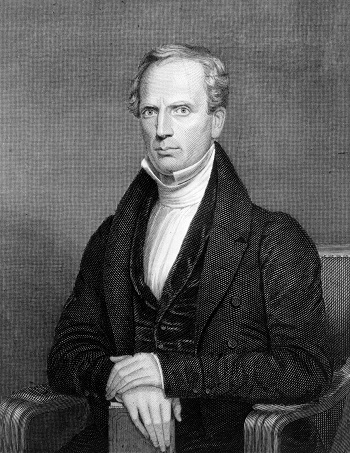1826 Utica, New York Revival
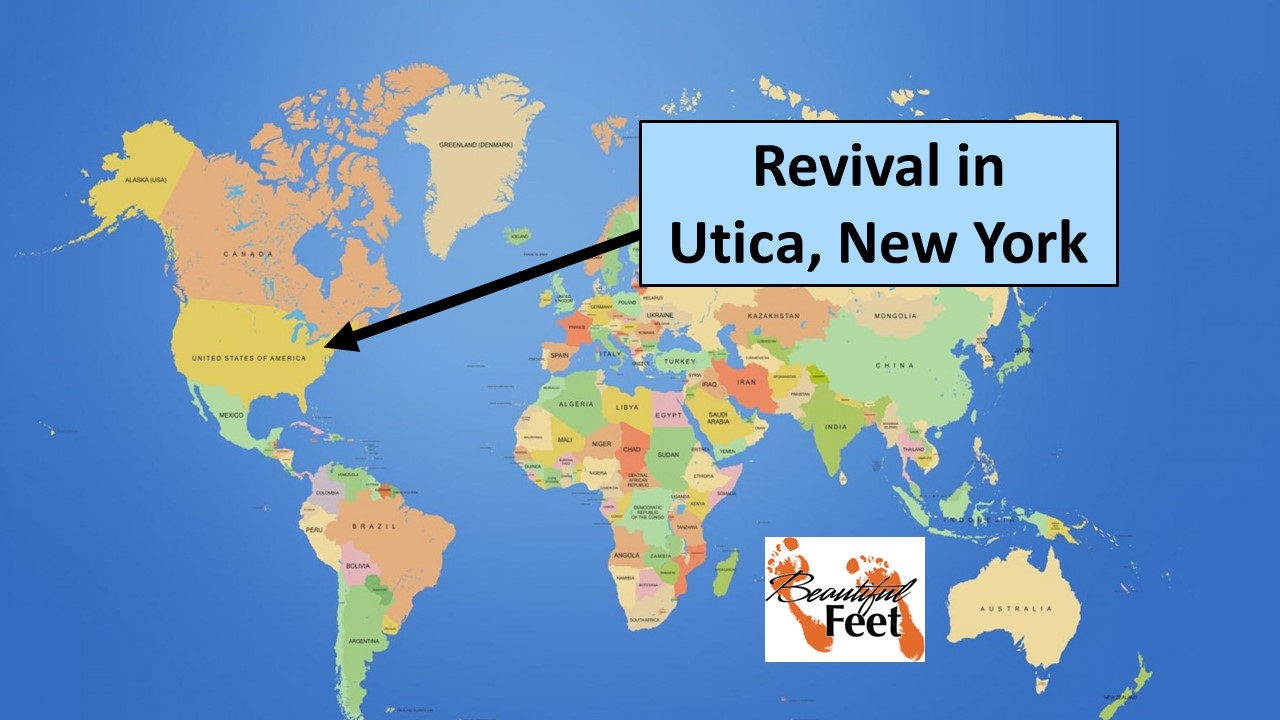
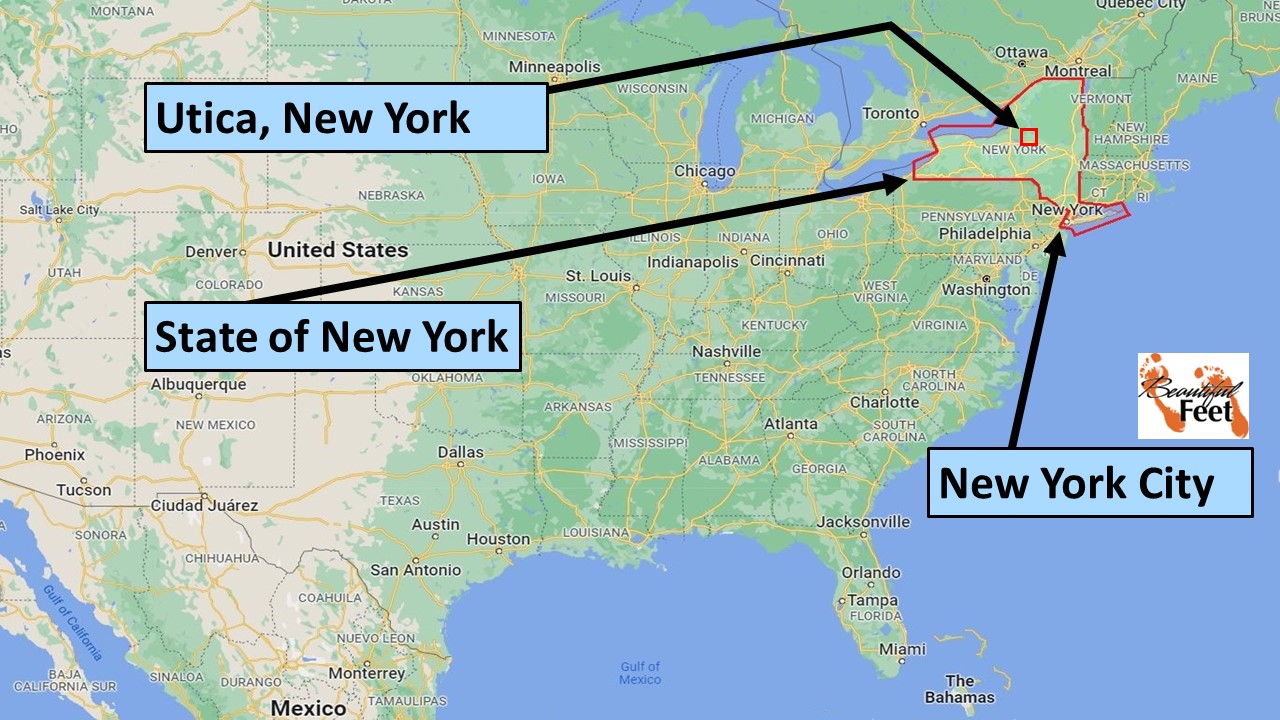
Preliminary Reading
To help with the historical context, we recommend reading about the revivals that had been previously occurring in other New England states. Those revivals can be read with these accounts:
► 1790-1840 Second Great Awakening
► 150 New England Revivals (1797 – 1814)
► 1815-1840 Upstate New York Revivals
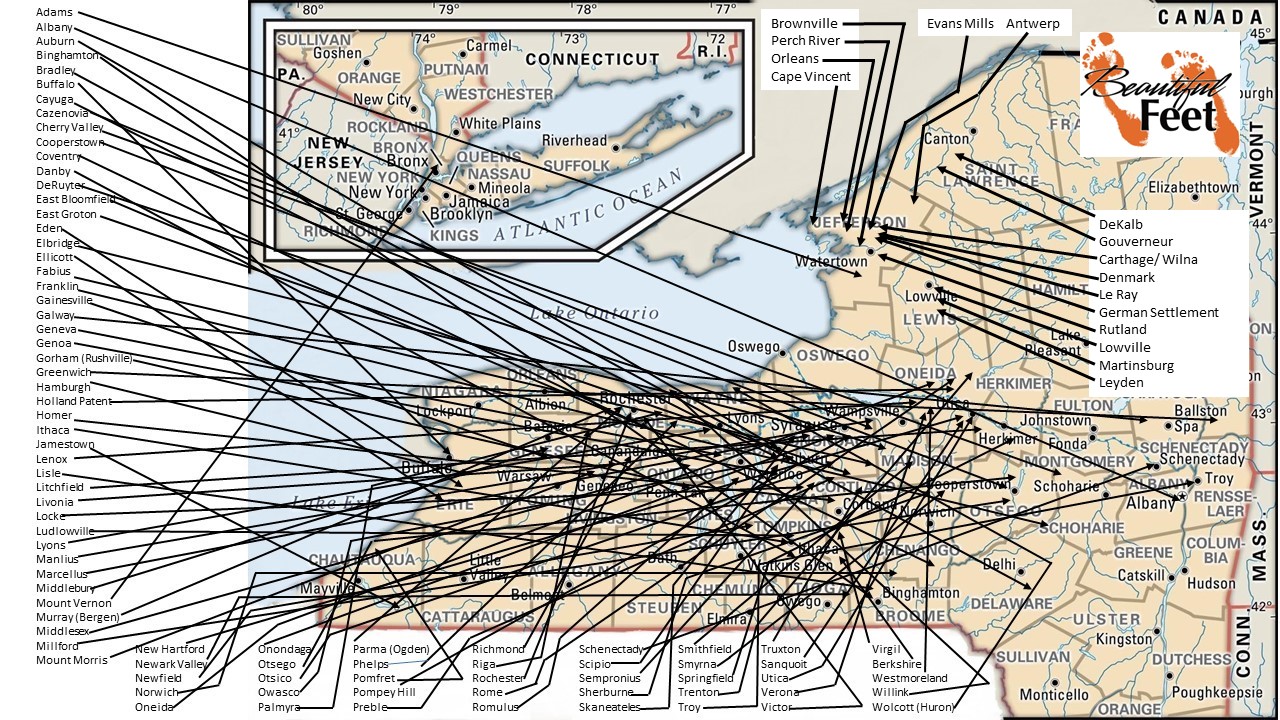
State of New York: The black lines indicate locations where
the revival spread over the next decade.
The area became known as the “Burned-Over District.”
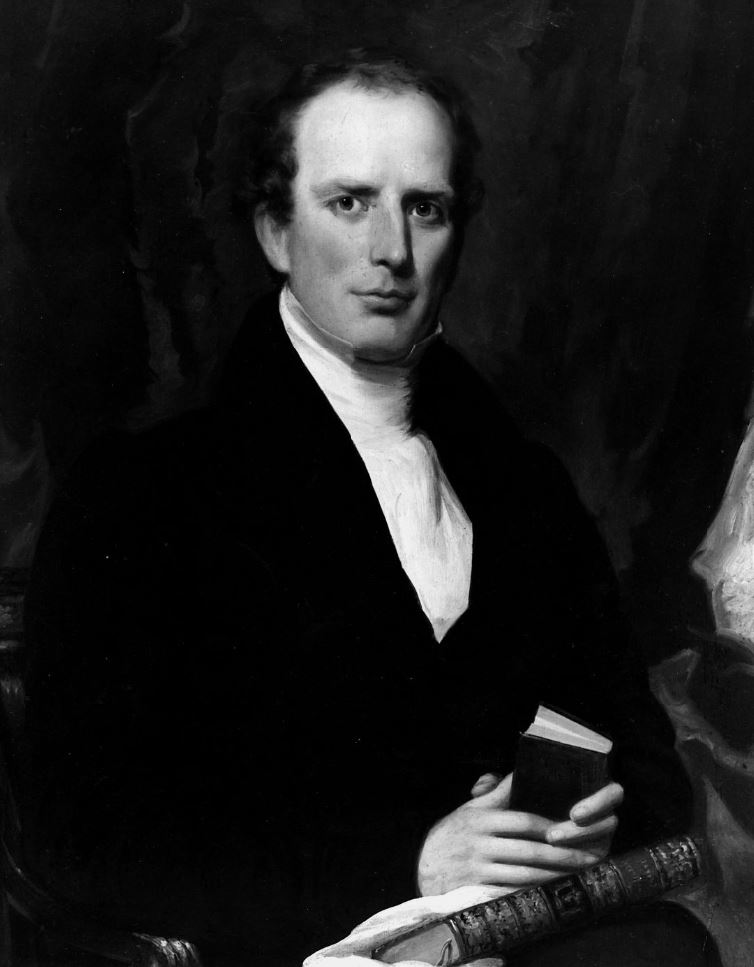
Charles Grandison Finney – Father of modern revivalism and the leading figure of the Second Great Awakening
Introduction
Charles G. Finney (1792-1875) was raised in Oneida County, New York, which at that time was still considered a wilderness. There were no Sunday Schools or opportunities for religious education, leaving the people with no religious convictions. The few ministers that passed through were described as uneducated, and laughably so.
Finney’s conversion in 1821, at 29 years of age, was extremely dramatic, and was accompanied by a powerful baptism of the Holy Spirit. You can read about it here. Immediately following his conversion, he abandoned his promising career as a lawyer and by 1824 was ordained as a Presbyterian minister. By 1827 he had “risen to national prominence as the most effective evangelist in the West.”
Finney’s unique methods of evangelism earned him the title of being the “father of modern revivalism.” His methods paved the way for other mass-evangelists, like Dwight L. Moody, R. A. Torrey, John W. Chapman, Billy Sunday, and Billy Graham, who adapted and built upon Finney’s methods.
Condition of Other Churches throughout Oneida County
According to the reports of ministers, all the churches were in a slump.
► The moral conditions of the towns were dark.
► People pursued their pleasure or business.
► Sunday school, prayer meetings, and regular church attendance were neglected.
► Church services were formal and cold.
► Prayers were said to be faithless.
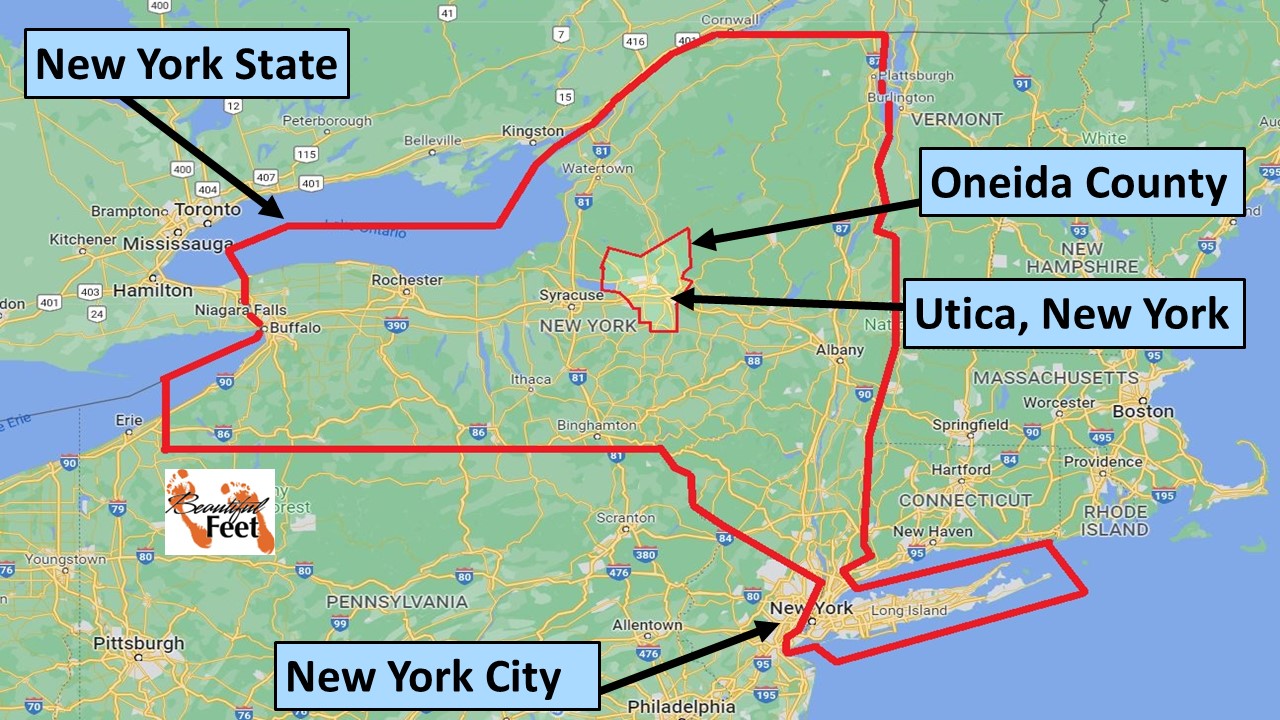
Extraordinary Prayer
While Charles Finney was conducting the Rome, New York Revival, he heard of a prominent man who had passed away in Utica, a town about 17 miles to the southeast. He went to attend that man’s funeral. The pastor of the First Presbyterian Church, Samuel Clark Aikin, was conducting the funeral.
Aikin told Finney of the “spirit of prayer” that was resting on his congregation and city, with one woman being so burdened down with the compulsiveness to pray, that she prayed for two straight days with no intermission.
Aikin asked Finney to come and work with him and his people, and Finney agreed, and commenced his work there around February 1, 1826, and stayed till May of that year.
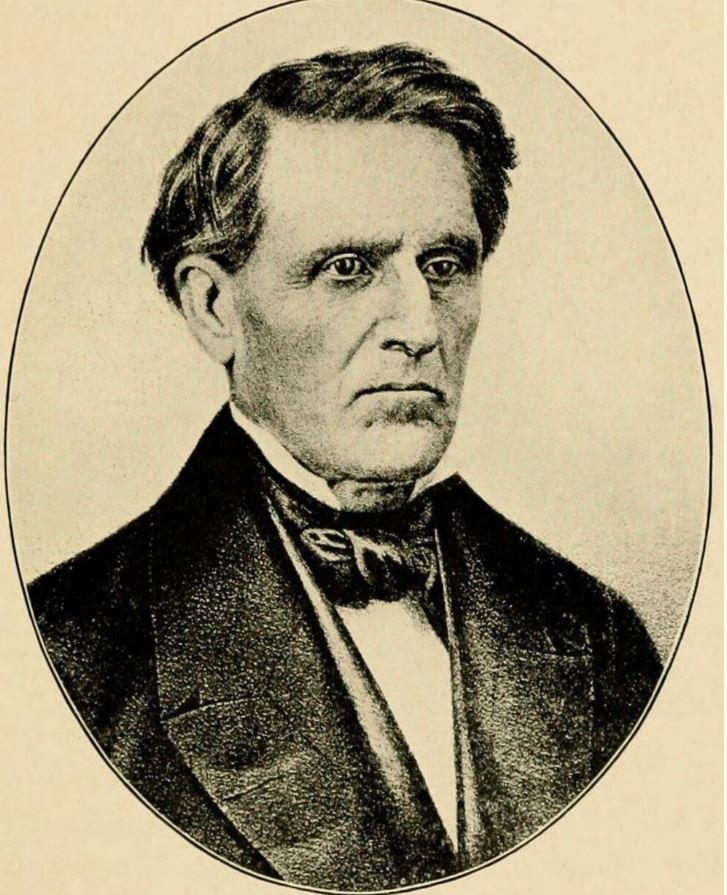
Samuel Clark Aikin: pastor of the First Presbyterian Church in Utica
The Revival in Utica
As soon as Finney began his work in Utica, he divided his work between the two Presbyterian churches in that town, and:
The Word took immediate effect, and the place became filled with the manifest influence of the Holy Spirit. Our meetings were crowded out every night, and the work spread and went on powerfully, especially in the two Presbyterian congregations.

Oneida County, New York: Over a dozen towns in Oneida County experienced revival at about the same time as Utica. Those revivals can be read with this link.
The Sheriff Converts to Christ
During one of the services, not long after Finney began his work in Utica, the skeptical sheriff of the county (Charles C. Broadhead), who we mention in the Rome, New York Revival, was present in a church service.
After Finney had spoken but a few words of his sermon,
I observed Mr. Broadhead rise up from his seat, turn deliberately around, wrap his great coat about him, and kneel down… The sheriff continued on his knees during the whole service. He then retired to his room in which he boarded… He afterwards told me that his mind was greatly burdened when he went home.
It was in the privacy of his room that the sheriff laid upon his bed and made his commitment to Christ, and when he did, he said that “his distress left him so suddenly that he fell asleep and did not wake for several hours.”
Hotel Becomes a Revival Center
Special prayer was made for the manager of the largest hotel in town (the one the sheriff stayed at), and that manager and his family were converted, along with a large number of the boarders.
The spiritual influence of that hotel was so profound, and the presence of God so strong, that as stages would stop at the hotel, whether to eat a meal, or to spend the night, it was known that some of the travelers would be converted before they boarded the stage and left town.
One merchant passing through the town was converted, and upon his return to his home of Lowville, New York, he carried the fire of revival with him, and not long after a revival commenced in Lowville.
Indeed, both in this place and in Rome it was a common remark that nobody could be in the town, or pass through it, without being aware of the presence of God; that a divine influence seemed to pervade the place, and the whole atmosphere seemed to be instinct with a divine life.
Opposition to New Measures (in evangelism)
It was during the revival at Utica that the attacks on Finney and his methods of evangelism were severe. Possibly the most “scandalous” accusation made against him was that he was allowing women to exhort and pray during church services.
Death of an Opponent to the Revival
Rev. James Southard was a very vocal opponent of the revival, and during a meeting of the Presbyterian ministers of Oneida County, which was held in Utica during the high point of the revival, he gave
A violent speech against the revival as it was going on. What he said greatly shocked and grieved the Christian people who were present.
There was a great crying to God that night that he would counteract any evil influence that might result from that speech which had been made by Mr. Southard. The next morning Mr. Southard was found dead in his bed.
This again produced a great shock, but on the right side. It more than counteracted all the influence which Mr. Southard’s speech had had in presbytery.
Utica Becomes a Revival Center
As the news of the conversions was spreading throughout Oneida County and beyond, people would come out of curiosity, and upon their arrival, would be converted to Christ, if they were not already.
Revival at New Hartford, New York
While living in Utica, from February till May 1826, Finney spent a considerable amount of time preaching in the village of New Hartford, which is located about four miles southwest of Utica. It was here that a “precious and powerful work of grace” was experienced at the Presbyterian church.
Revival at Whitesboro, New York
Like New Hartford, Whitesboro, located a few miles to the west of Utica, was another of the villages powerfully impacted by Finney’s preaching during his visits there.
Cotton Mill Revival
On the Oriskany Creek, a little north of Whitesboro, New York, Finney was invited to preach at the schoolhouse located there. There was a powerful result from the preaching, and it greatly affected many of the young people who were employed at the local cotton mill.
The next morning Finney toured the cotton factory, where his brother-in-law was the superintendent.
While going through a room filled with young women who were spinning or weaving, he saw a couple of them looking in his direction as they spoke to each other, and laughing at the same time. Finney walked toward them, and when they saw him coming, they became agitated.
The thread on a machine broke, and as a girl was trying to fix it, her hands were trembling so much she couldn’t fix it. Finney said that,
I approached slowly, looking on each side at the machinery as I passed, but observed that this girl grew more and more agitated, and could not proceed with her work. When I came within eight or ten feet of her, I looked solemnly at her. She observed it, and was quite overcome, and sunk down, and burst into tears. That impression caught almost like powder, and in a few moments nearly all in the room were in tears.
This presence of God, accompanied by conviction power, spread through the factory. The owner of the factory, being present, gave the order to
Stop the mill, and let the people attend to religion; for it is more important that our souls should be saved than that this factory run.
The people were then assembled in the mule room, which was large enough for all of them, and Finney addressed the people there—and the results were staggering.
The revival went through the mill with astonishing power, and in the course of a few days nearly all in the mill were hopefully converted.
Results of the Revival
► The revival spread out from Rome and Utica.
► In Rome, there were 500 conversions in the space of a few weeks. That did not include children nor those who did not join with the Presbyterian church.
► The converts of Oneida County reached 3,000.
► Ministers arrived from “considerable distances,” being supportive of the revival.
► The York Methodist Church was organized with about 100 members, the majority of them being converts of the revival.
Correcting a Long-Standing Doctrinal Error
Presbyterians had for over 100 years believed that a sinner must remain under conviction a long time—maybe months or years—before the weight of their sins could be lifted and they were converted. Finney taught the opposite, that conversion could be near instantaneous. All that was required was immediate submission.
The “Old School” believed that the protracted duration of time led to stronger believers. But Finney proved that those experiencing “sudden conversions were some of the most powerful Christians that ever have been known in that region of the country.”
Letters and Publications Attacking Finney’s Methods
When high-profile ministers from the eastern seaboard attacked Finney and criticized the revival movement, Finney chose to say nothing about it in public, neither during church services nor in print. The result was that the attacks had no effect on what God was doing.
Finney Revival Account List
Access all accounts of Finney’s revivals using this link.
Primary Sources
► 1826 Revival in Oneida County, New York by Beautiful Feet
► A Narrative of the Revival of Religion in the County of Oneida by Presbyterian Church in the USA
► Chapter XIV Revival at Utica: The Memoirs of Charles G. Finney by Charles G. Finney
► The Memoirs of Charles G. Finney: The Complete Restored Text by Charles G. Finney
Secondary Sources
► Charles G. Finney by Wikipedia
► Charles Grandison Finney & the Second Phase of the Second Great Awakening by Christian History Institute
► Eerdman’s Handbook to Christianity in America by Mark A. Noll
► Fire From Heaven by Robert Evans
► Great Revivals and the Great Republic by Warren Candler
► Man of Like Passions: The Life Story of Charles Grandison Finney by Richard E. Day
► Memoirs of Revivals of Religion by Charles G. Finney
► Memoir of the Life and Character of Rev. Asahel Nettleton by Bennet Tyler
► New England Revivals by Bennet Tyler
Return to List of Revival Stories
Chet & Phyllis Swearingen:
Office: (260) 920-8248
romans1015@outlook.com
Beautiful Feet
P.O. Box 915
Auburn, IN 46706

